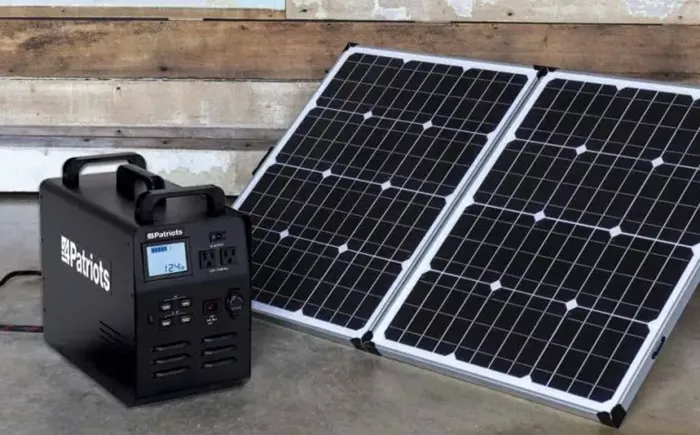In today’s world, having a reliable power source during emergencies is crucial. Whether it’s a natural disaster, power outage, or off-grid living situation, a solar generator can be a lifesaver. Unlike traditional gas generators, solar generators are clean, quiet, and renewable. In this guide, we’ll explore the best solar generators for emergency home use, their features, and how to choose the right one for your needs.
What is a Solar Generator?
A solar generator is a portable power station that uses solar panels to convert sunlight into electricity. It stores this energy in a battery, which can then be used to power appliances, devices, and tools. Solar generators are eco-friendly, require no fuel, and produce no emissions, making them ideal for emergency situations.
Why Choose a Solar Generator for Emergencies?
Clean Energy: Solar generators rely on renewable energy, reducing your carbon footprint.
Quiet Operation: Unlike gas generators, solar generators operate silently.
Low Maintenance: With no moving parts, solar generators are durable and require minimal upkeep.
Portability: Most solar generators are lightweight and easy to transport.
Safety: No risk of carbon monoxide poisoning or fuel spills.
Key Features to Look for in a Solar Generator
When choosing a solar generator for emergency home use, consider the following features:
1. Battery Capacity
Battery capacity, measured in watt-hours (Wh), determines how much energy the generator can store. A higher capacity means more power for longer periods.
2. Power Output
The power output, measured in watts (W), determines what devices the generator can run. Ensure it can handle your essential appliances, such as refrigerators, medical devices, or lights.
3. Solar Panel Compatibility
Check if the generator comes with solar panels or if you need to purchase them separately. Also, consider the charging time and efficiency of the panels.
4. Portability
For emergencies, a lightweight and compact design is essential. Look for models with handles or wheels for easy transport.
5. Multiple Charging Options
Some solar generators can also be charged via AC outlets or car chargers, providing flexibility during emergencies.
6. Durability
Choose a generator with a robust build to withstand harsh conditions.
7. Expandability
Some models allow you to add extra batteries or solar panels for increased capacity.
Top 5 Solar Generators for Emergency Home Use
Here are the best solar generators for emergency home use, based on performance, features, and customer reviews:
1. Goal Zero Yeti 3000X
Battery Capacity: 3,032Wh
Power Output: 3,500W (7,000W surge)
Weight: 69.4 lbs
Key Features: High capacity, multiple charging options, expandable with additional batteries.
Best For: Powering large appliances and extended outages.
2. Jackery Explorer 2000 Pro
Battery Capacity: 2,160Wh
Power Output: 2,200W (4,400W surge)
Weight: 43 lbs
Key Features: Fast solar charging, quiet operation, user-friendly interface.
Best For: Medium to large households and off-grid living.
3. Bluetti AC200P
Battery Capacity: 2,000Wh
Power Output: 2,000W (4,800W surge)
Weight: 60.6 lbs
Key Features: High surge capacity, multiple output ports, durable design.
Best For: Heavy-duty use and powering multiple devices simultaneously.
4. EcoFlow Delta Pro
Battery Capacity: 3,600Wh (expandable to 25,000Wh)
Power Output: 3,600W (7,200W surge)
Weight: 99 lbs
Key Features: Massive capacity, fast charging, smart app control.
Best For: Whole-home backup power and long-term emergencies.
5. Renogy Phoenix 200
Battery Capacity: 189Wh
Power Output: 200W (400W surge)
Weight: 5 lbs
Key Features: Ultra-portable, affordable, built-in flashlight.
Best For: Small-scale emergencies and outdoor activities.
How to Choose the Right Solar Generator for Your Needs
1. Assess Your Power Needs
Make a list of essential devices and appliances you need to power during an emergency. Calculate their total wattage to determine the required battery capacity and power output.
2. Consider Your Budget
Solar generators range from a few hundred to several thousand dollars. Balance your budget with the features and capacity you need.
3. Evaluate Portability
If you need to move the generator frequently, opt for a lightweight and compact model.
4. Check Charging Options
Ensure the generator can be charged via solar panels, AC outlets, and car chargers for maximum flexibility.
5. Read Reviews
Customer reviews can provide valuable insights into the generator’s performance and reliability.
Tips for Using a Solar Generator During Emergencies
Pre-Charge the Battery: Keep your generator fully charged before a storm or outage.
Store in a Safe Place: Protect the generator from extreme temperatures and moisture.
Use Energy Wisely: Prioritize essential devices to conserve power.
Test Regularly: Ensure the generator is functioning correctly before an emergency.
Invest in Extra Solar Panels: This can reduce charging time and increase energy production.
Frequently Asked Questions (FAQs)
1. How long does a solar generator last?
Most solar generators last 5-10 years, depending on usage and maintenance.
2. Can a solar generator power a refrigerator?
Yes, but ensure the generator has sufficient battery capacity and power output.
3. How long does it take to charge a solar generator?
Charging times vary but typically range from 6-12 hours with solar panels.
4. Are solar generators safe to use indoors?
Yes, solar generators are safe for indoor use as they produce no emissions.
5. Can I use a solar generator during a hurricane?
Yes, but ensure it’s stored in a safe, dry location and protected from water damage.
Conclusion
A solar generator is an excellent investment for emergency home use. It provides clean, reliable, and quiet power when you need it most. By considering factors like battery capacity, power output, and portability, you can choose the best solar generator for your needs. Whether you’re preparing for a natural disaster or living off-grid, a solar generator ensures you’re never left in the dark.

